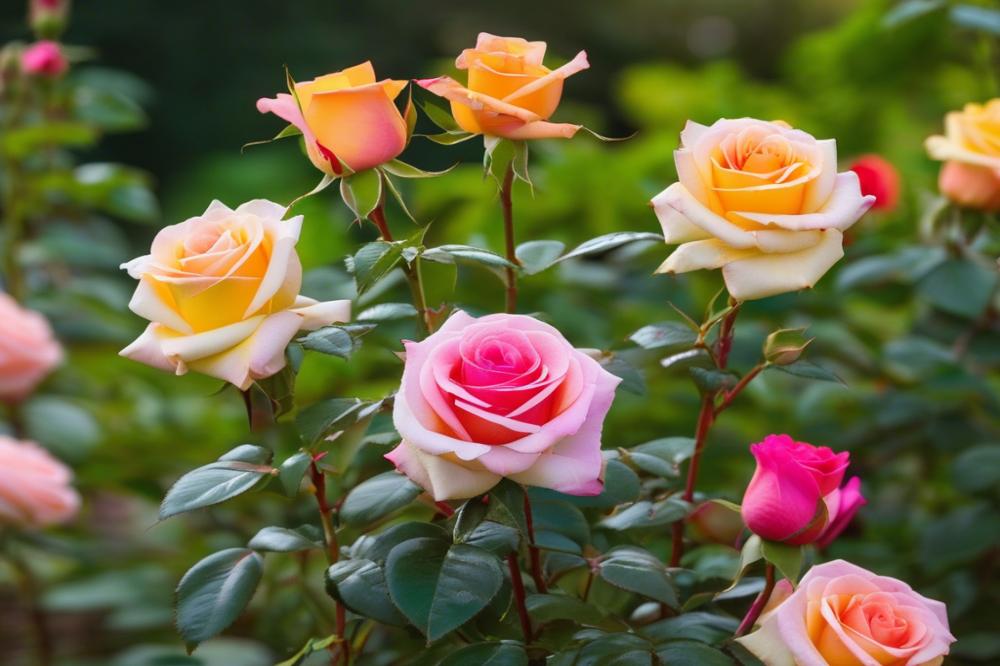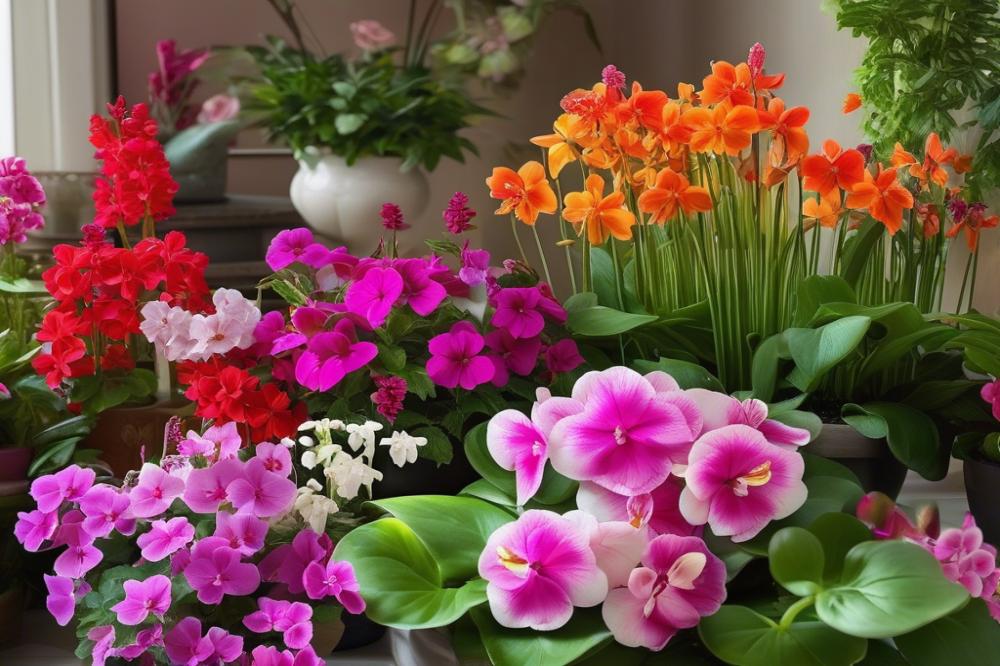Introduction
Rose gardening has become an immensely popular hobby for many people around the world. Individuals cherish the beauty and fragrance that these flowers bring to their gardens. Not only do these plants enhance landscapes, but they also evoke emotions and memories. Roses are symbols of love and passion. This allure makes them a must-have for many garden enthusiasts.
Propagation plays a vital role in the cultivation of roses. Growing more roses from existing ones allows gardeners to increase their collection without needing to purchase new plants. It promotes biodiversity and helps preserve various rose varieties. By practicing propagation, anyone can create their own rose plants, often with little investment. This makes rose gardening accessible and rewarding for all.
One effective method of propagation that stands out is grafting. Grafting involves joining parts of two plants together to grow as one. Through this technique, gardeners can combine the best traits of different rose varieties. For example, a robust rootstock may be paired with a beautiful bloom. Understanding grafting can open new paths for creativity in gardening. Whether you’re aiming for a hardy plant or stunning flowers, grafting can meet those desires.
With its unique advantages, learning to graft roses can be an exciting challenge. It’s essential to arm yourself with proper knowledge and skills. The process may seem complex initially, but with practice, it becomes easier. Take the plunge into the world of grafting today! Explore how you can grow exquisite roses using this powerful propagation technique. For the best results, start with #anchor_text_1# and build your skills from there. Happy gardening! If you seek more insights, #anchor_text_2# will guide your journey through rose propagation.
Understanding Grafting Techniques

Grafting is an important method for propagating roses. It involves joining two different plant parts together. The purpose is to combine the strengths of two plants. This can lead to improved growth and flowering. Grafting can help people grow roses that might not thrive in their local climate. By using this technique, gardeners can cultivate a diversity of rose varieties.
Different Types of Grafting Methods
Several grafting methods are commonly used for rose propagation. T-budding is a well-known technique. In this method, a bud is taken from a desirable rose and inserted into the bark of a rootstock. Whip grafting is another approach. This involves joining the cut ends of both the scion and rootstock at an angle. Each method has its benefits, and the choice often depends on the gardener’s skill level and the specific roses being propagated.
Besides T-budding and whip grafting, there are other techniques to consider, such as cleft grafting and side-veneer grafting. Cleft grafting is often used for larger rootstocks. This method allows for multiple scions to be grafted onto one root system. Side-veneer grafting is useful when you want to add a rose variety to an existing plant. Overall, each method offers a unique way to achieve your rose gardening goals.
Benefits of Using Grafting for Cultivating Roses
Grafting offers several advantages for rose lovers. It allows for faster growth compared to other propagation methods. Using grafts, gardeners can produce plants that are disease-resistant. That trait is crucial for maintaining a healthy garden. Additionally, grafting can improve the overall appearance of the rose. The combinations of different rootstocks and scions can lead to vibrant blooms and strong plants. Such enhancements attract many gardeners to this technique, as they seek beautiful results.
Another significant benefit of grafting is the ability to adapt to various soil conditions. By selecting the right rootstock, growers can better support hybrid roses in less-than-ideal soils. Grafting enables the cultivation of roses that thrive in different climates. It makes growing roses accessible to more enthusiasts. These advantages are substantial, and they highlight why many people opt for grafting in their rose-growing journey.
Selecting the Right Rose Varieties

Choosing suitable rose varieties for grafting is an important step. You want to find types that will thrive under your conditions. Compatibility between the rootstock and scion is essential. If these two parts don’t match well, the graft may fail. Not every rose works well with every rootstock.
Consider growth habits when selecting your roses. Some may grow more vigorously than others, affecting how they develop after grafting. A combination of a strong root system and a compatible top variety is necessary. Pay attention to both plants’ traits. This can influence how fast your roses will bloom and their overall health.
Climate resilience also plays a role. Certain roses do better in specific climates. If you live in a region prone to extreme weather, choose varieties that can withstand those conditions. Doing so will give your plants a better chance at survival.
Examples of Popular Rose Cultivars for Grafting
A few classic cultivars often used for grafting include ‘Peace’, ‘John F. Kennedy’, and ‘Double Delight’. ‘Peace’ is renowned for its stunning blooms and robust nature. Many gardeners favor it for its adaptability. ‘John F. Kennedy’, with its strong stems, is equally popular for grafting. Its resistance to diseases makes it a solid choice. ‘Double Delight’, showcasing fragrance and color, adds charm to any garden.
In addition, ‘Knock Out’ roses are well-known for their hardiness. Many people appreciate their low maintenance and vibrant color. For a more unique option, consider ‘Climbing Iceberg’. This variety adds vertical interest and is often used on walls and fences.
Selecting the right varieties takes careful consideration. Each choice impacts the health and beauty of your roses. Enjoy the process of finding the perfect plants for your garden. Start exploring options now, and your future blooms will thank you.
Grafting Process Step-by-Step

Necessary tools and materials for grafting roses
Before starting the grafting journey, one must gather essential tools and materials. Sharp pruning shears will be key for cutting stems accurately. A grafting knife offers precision to create neat cuts. You will require rootstock, which is the plant that supports the graft. Scion wood is also necessary; this is the section that contains the buds of the desired rose variety. Additionally, preparing grafting tape or paraffin wax is vital to secure the graft union. Some gardeners recommend having rubbing alcohol handy for sterilizing tools, preventing infection.
Detailed instructions on how to perform the grafting technique
Begin by selecting a healthy rootstock plant. Trim the top of the rootstock using sharp pruning shears. This ensures a clean cut and prepares it for the graft. Next, take the scion wood, ideally a strong stem with at least two buds. Cut the scion at an angle, making a wedge shape for better contact. Align the scion with the rootstock. Place the cut surface of the scion against the rootstock, matching the cambium layers—this is crucial for a successful connection.
Once aligned, wrap the graft tightly with grafting tape to hold it in place. This step protects the graft from drying out while encouraging healing. If you prefer, you can also use paraffin wax to seal the graft. It keeps moisture in and acts as a barrier against pests. Keep an eye on the graft for several weeks. Monitor for signs of growth, indicating that the graft has taken.
Tips for ensuring successful grafting
Timing plays an important role in grafting success. Late spring or early summer is often ideal when both rootstock and scion are actively growing. Pay attention to the weather; choose a day that is not too hot or too cold. Warm, sunny days can help the graft heal faster. Keeping the grafted area shaded and moist in the early days can also promote success.
Furthermore, patience is essential. Don’t rush the process. Once the graft shapes start to grow, it usually takes a few weeks for visible progress. Remove the tape gradually as the scion integrates with the rootstock. This prevents any strangling as the plant grows. Remember, practice leads to improvement, so don’t be discouraged by initial failures. Each attempt brings you closer to mastering the art of rose grafting.
Aftercare for Grafted Roses

Caring for grafted roses after propagation is essential for their success. Without proper attention, new plants may struggle to grow or even fail. Your efforts in this stage greatly influence the health and beauty of the roses.
Watering, Fertilizing, and Protecting New Grafts
Watering is a critical task. Newly grafted roses need consistent moisture. However, be cautious not to overwater, as soggy soil can lead to root rot. A good rule of thumb is to water when the top inch of soil feels dry. Using mulch around the base can help retain moisture and regulate temperature.
Fertilizing should occur about four to six weeks after grafting. A balanced fertilizer will provide the nutrients necessary for robust growth. Consider using a slow-release formula for continuous feeding. Apply it according to the product instructions to avoid harming the plant.
Protection from pests and extreme weather is also crucial. Check for aphids or spider mites regularly. These nuisances can damage tender new growth. If issues arise, organic insecticidal soaps can be effective in controlling infestations. Additionally, shielding the grafts from harsh sun or frost can prevent stress on the plants.
Signs of Successful Grafting and Troubleshooting Common Issues
It’s vital to recognize signs that your grafting has been successful. New leaves sprouting from the grafted area is a great indication. Healthy, green foliage means the graft union is strong. If you see growth, that’s a positive signal.
Sometimes, grafts may fail to thrive. Blackened or wilting leaves might indicate a problem. If this happens, check for pests or diseases. Occasionally, the graft union may separate. If it does, re-wrapping the graft with tape may help if it occurs within a short time after grafting.
Resist the urge to panic if issues arise. Understanding how to troubleshoot can lead to solutions. Be aware of climatic conditions; extreme heat or cold can stress grafted roses. Always observe your plants closely and adjust care as necessary.
Advantages of Grafting over Other Propagation Methods
Grafting offers some clear benefits when compared to other techniques like cuttings and layering. For instance, when you use cuttings, there’s often a higher failure rate. Many may not realize that cuttings depend heavily on the right conditions. This can be a challenge for someone new to gardening. Grafting, on the other hand, combines two plants into one. This creates a stronger and more resilient organism.
Longevity is a significant factor to consider. Grafted roses can outlive those grown from cuttings. The scion and rootstock relationship can promote sturdiness, which affects how long the plant thrives. When you grow using layering, a lot of time is spent on nurturing the branches until they’re ready to be separated. This patience isn’t needed with grafting. You’ll see results more quickly when you choose this method.
Disease resistance is another area where grafting shines. Some rootstocks are bred specifically to fend off pests and diseases. This special breeding often aids in protecting the grafted rose. In contrast, plants grown from cuttings may inherit diseases from the original plant. This can lead to a less healthy rose, limiting its potential.
Phenotypic advantages also make grafting appealing. Different varieties can be combined to create unique blooms. This flexibility allows gardeners to experiment more freely. With cuttings, you’re generally limited to the characteristics of just one plant. Grafting opens the door to endless possibilities.
When should you consider grafting as your propagation method? If you’re after a robust plant that can withstand harsher conditions, grafting is worth exploring. The technique is ideal when you desire specific traits in your rose bushes. For those looking to create roses with special colors and fragrances, this method is a top choice. Grafting often provides faster growth compared to starting from seeds as well. Take all of these benefits into account, and it’s easy to see why many prefer grafting over other methods.
Wrapping Up the Art of Grafting Roses
Grafting plays a vital role in the cultivation of roses. This technique allows gardeners to combine the best traits of different plants. By understanding how to graft, you can create robust roses that bloom beautifully. It opens doors to a variety of colors, shapes, and fragrances, enriching any garden.
Rose gardeners should not hesitate to experiment with grafting. Trying out different techniques can lead to surprising results. Some may even discover their own preferences for certain methods. Starting with simple grafts can build confidence, setting the stage for more ambitious efforts later on. Remember, every successful graft not only enhances the plant but also adds joy to your gardening experience.
The beauty and diversity that grafted roses can bring to gardens are truly remarkable. Each grafted rose represents a blend of history and innovation. They can become focal points, sparking conversations among friends and family. Moreover, these plants symbolize the effort and care you’ve invested, merging art with nature. Embrace this rewarding process, and let it inspire further creativity in your gardening journey. After all, every rose has its own story, and your efforts can make it even more enchanting. So grab your tools and get started on your journey with #anchor_text_3# and make your garden flourish with #anchor_text_4#.



